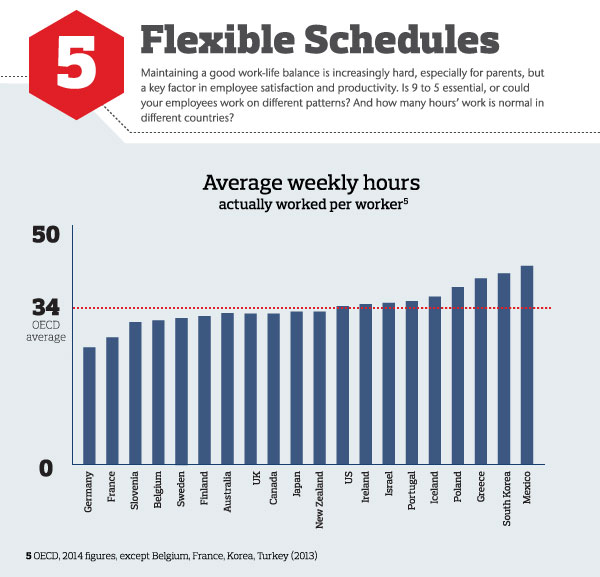Where the Oklahoma Court Went Wrong
The problem with the Oklahoma Option decision isn't simply that the state Supreme Court reached the wrong conclusion.

The problem with the Oklahoma Option decision isn't simply that the state Supreme Court reached the wrong conclusion.

Get Involved
Our authors are what set Insurance Thought Leadership apart.
|
Partner with us
We’d love to talk to you about how we can improve your marketing ROI.
|

Daryl Davis is a member of the American College of Occupational and Environmental Medicine and is sought after by governmental agencies, insurance carriers, risk managers and others in this field. Davis founded www.WorkersCompensationOptions.com, a company committed to WC and legal alternatives to WC.
Insurers once asked, How do we do what we do better? Now, it's, How do we do what we haven't ever done before?

Get Involved
Our authors are what set Insurance Thought Leadership apart.
|
Partner with us
We’d love to talk to you about how we can improve your marketing ROI.
|

Denise Garth is senior vice president, strategic marketing, responsible for leading marketing, industry relations and innovation in support of Majesco's client-centric strategy.
A sea change in awareness is underway, driven by intensifying cyber exposures. But organizational change won’t happen overnight.

Get Involved
Our authors are what set Insurance Thought Leadership apart.
|
Partner with us
We’d love to talk to you about how we can improve your marketing ROI.
|

Byron Acohido is a business journalist who has been writing about cybersecurity and privacy since 2004, and currently blogs at LastWatchdog.com.
Agencies tell themselves they stand out from the competition, but when you try a little test the differentiation disappears very quickly.

Get Involved
Our authors are what set Insurance Thought Leadership apart.
|
Partner with us
We’d love to talk to you about how we can improve your marketing ROI.
|

Mike Manes was branded by Jack Burke as a “Cajun Philosopher.” He self-defines as a storyteller – “a guy with some brain tissue and much more scar tissue.” His organizational and life mantra is Carpe Mañana.
Instead of spending hours filling in data and searching for quotes one at a time, I can get four quotes from four carriers within 90 seconds.

Get Involved
Our authors are what set Insurance Thought Leadership apart.
|
Partner with us
We’d love to talk to you about how we can improve your marketing ROI.
|

Rashmi Melgiri is CEO and founder of Functional Finance.
She was previously COO and co-founder of CoverWallet. She was also a strategy consultant at the largest North American TMT (technology, media and telecom) consulting group, Altman & Vilandrie.
A continuing lack of transparency around premiums can only be bad for business in the long run: The customer is now in control.

Get Involved
Our authors are what set Insurance Thought Leadership apart.
|
Partner with us
We’d love to talk to you about how we can improve your marketing ROI.
|

Andre Hesselink is the CEO of GoBear.com, Asia’s first and only meta search engine for finance and insurance products. He launched the company in 2015 when, after moving to Singapore in 2011 to set up the Asian branch of Travix, his frustrations trying to purchase car insurance inspired him to launch GoBear.
Haven Life, John Hancock and USAA demonstrate to rethink and reinvent the business of insurance.


 This is the fifth year of our SMA Innovation in Action Awards program, which honors insurers and solution providers that are putting innovation into action with creative projects, initiatives, technologies or solutions that further insurers’ progress toward the goal of becoming Next-Gen Insurers. We encourage you to apply for the SMA Innovation in Action Insurer Award or the Solution Provider Award to share your successful innovations!
Submissions are due by June 30, 2016. A full program description, FAQs and links to the applications for both awards can all be found on the SMA website.
This is the fifth year of our SMA Innovation in Action Awards program, which honors insurers and solution providers that are putting innovation into action with creative projects, initiatives, technologies or solutions that further insurers’ progress toward the goal of becoming Next-Gen Insurers. We encourage you to apply for the SMA Innovation in Action Insurer Award or the Solution Provider Award to share your successful innovations!
Submissions are due by June 30, 2016. A full program description, FAQs and links to the applications for both awards can all be found on the SMA website.
Get Involved
Our authors are what set Insurance Thought Leadership apart.
|
Partner with us
We’d love to talk to you about how we can improve your marketing ROI.
|

Karen Furtado, a partner at SMA, is a recognized industry expert in the core systems space. Given her exceptional knowledge of policy administration, rating, billing and claims, insurers seek her unparalleled knowledge in mapping solutions to business requirements and IT needs.
The right onboarding is crucial for CSRs, whose duties include being the face of the company, answering questions for customers.

Get Involved
Our authors are what set Insurance Thought Leadership apart.
|
Partner with us
We’d love to talk to you about how we can improve your marketing ROI.
|

Susan Kearney joined The Institutes in 2007 as a senior director of knowledge resources. In her current role, Kearney is a key source for industry issues and technical insurance, providing content for trade publications and leading workshops and seminars.
For companies operating in more than one country, setting benefits can be complex. Here are benchmarks that will help.









 Talking Points
“There is a clear trend of centralization at multinationals, yet it isn’t flowing through to the way that employee benefits are managed…. The vast majority of decisions are still being taken by local stakeholders. [Effectiveness of global planning] is generally being restricted by a lack of up-to-date information and administration activities.” – Carl Redondo, Aon Global Benefits
“When considering the impact of local laws, care should be taken to note cultural differences and issues of discrimination. Employers should question whether or not a particular benefit will integrate with cultural norms.” – Personnel Today
“You need to understand what impact [benefit schemes] are having on behavior… a big alarm bell should be ringing if they perceive it to be unfair” – Jonny Gifford, Chartered Institute of Personnel and Development
“This article originally appeared on TheOneBrief.com, Aon’s weekly guide to the most important issues affecting business, the economy and people’s lives in the world today.”
Further Reading
Talking Points
“There is a clear trend of centralization at multinationals, yet it isn’t flowing through to the way that employee benefits are managed…. The vast majority of decisions are still being taken by local stakeholders. [Effectiveness of global planning] is generally being restricted by a lack of up-to-date information and administration activities.” – Carl Redondo, Aon Global Benefits
“When considering the impact of local laws, care should be taken to note cultural differences and issues of discrimination. Employers should question whether or not a particular benefit will integrate with cultural norms.” – Personnel Today
“You need to understand what impact [benefit schemes] are having on behavior… a big alarm bell should be ringing if they perceive it to be unfair” – Jonny Gifford, Chartered Institute of Personnel and Development
“This article originally appeared on TheOneBrief.com, Aon’s weekly guide to the most important issues affecting business, the economy and people’s lives in the world today.”
Further Reading
Get Involved
Our authors are what set Insurance Thought Leadership apart.
|
Partner with us
We’d love to talk to you about how we can improve your marketing ROI.
|

François Choquette leads the global benefits consulting team for Aon Hewitt. He has 25 years of experience assisting multinationals with a broad range of international human resources areas. He is one of the key architects of Aon Hewitt Global Benefit Solution (GBS).
Small- and medium-sized businesses really can avoid overpaying, lowering health costs and gaining a competitive edge.

Get Involved
Our authors are what set Insurance Thought Leadership apart.
|
Partner with us
We’d love to talk to you about how we can improve your marketing ROI.
|

David Berg is co-founder and chairman of the board of Redirect Health. He helps oversee operations and develops innovative ways to enhance the company’s processes and procedures for identifying the most cost-efficient, high-quality routes for common healthcare needs.